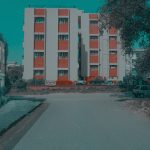You can also download an e-reader friendly version here.
On March 11, 2019 the State Bank of Pakistan (SBP) formally published its policy parameters for low-cost housing finance. These circulars represent the official “notification” of parameters that were first floated through a policy paper in July 2018. In addition to relaxations to the Housing Finance Prudential Regulations (HFPR) that govern lending in the housing sector, a financing facility was also announced for special segments. Building on Tabadlab Working Paper 01 – Optimising the Naya Pakistan Housing Policy Opportunity, this First Response deals with changes between the notified and draft parameters, and analyses affordability in the low-income segment. It also examines institutional lending practices, and offers recommendations for a more inclusive and coherent Naya Pakistan Housing Programme (NPHP).
Relaxations for Low-cost Housing Finance
The new SBP measures to stimulate low-cost housing include the following amendments to the HFPR[1]:
- Regulation HF 4: Loan to Value Ratio (LTV): LTV ratio of up to 90:10 shall be maintained for low cost housing finance.
- Regulation HF 5: Limit on Exposure against Real Estate Sector: Financing extended to low cost housing, shall be exempted from exposure limit of 10 percent on real estate sector.
- Regulation HF-7: Property Assessment: For the purpose of financing low cost housing units, banks/DFIs are allowed to apply the valuation of single unit on all the units of the same society/colony instead of conducting separate valuation for each unit constructed on the same layout and size.
- Regulation HF 9: General Reserve against Housing Finance: Banks/DFIs are exempted from general reserve requirement against the financing extended to low cost housing.
The qualification criteria for those seeking to access low-cost housing finance has been defined as follows:
- Total maximum value of the housing unit/apartment (upto PKR 3.0 million)
- Total covered area of the housing unit/apartment (upto 850 square feet in urban areas)
- Total size of loan (upto PKR 2.7 million)
Furthermore, a refinancing[2] facility for banks/FIs – both Islamic and conventional – to facilitate long-term affordable funding for special segments was announced. Under this facility, up to 100% of housing finance extended to special segments will be refinanced by SBP. Special segments include widows, children of martyrs, special persons, transgenders and persons in areas severely affected by terrorism. This reflects strongly on the equity credentials of this policy.
The table below compares the key parameters of the original policy paper of 2018 with the newly announced and notified policy:
| Notified Policy (2019) | SBP Policy Paper (2018) | |
| Maximum household income of low-cost housing finance borrower | Did not specify | PKR 60,000 |
| Maximum value of the housing unit/apartment | PKR 3.0 million* | PKR 2.5 million |
| Maximum Loan Value | PKR 2.7 million | PKR 2.0 million |
| Covered Area | 850 sq. ft in urban area | Did not specify |
| Maximum Tenor | 12 ½ years | 12 ½ years |
| Special Segments | Introduced | Did not specify |
| Financing Rate: Low-cost Housing | No change communicated | Blended Rate
(50% refinancing by SBP at 5%; 50% at maximum 12% or 1-year KIBOR+4%) |
| Financing Rate: Low-cost Housing Special Segments | 5%
(100% refinancing by SBP) |
N/A |
* Additional criteria for qualifying for special segments include: construction financing for a housing unit only; financing for plot purchase for construction of housing unit is capped PKR 1 million.
These incentives and relaxations are aimed at improving the pricing and terms of housing finance that will be available to households that seek to acquire housing units under the NPHP schemes.
While these regulatory framework adjustments are encouraging, the critical success factor will be the manner in which by banks and DFIs transform them into actual products and services for the promotion and expansion of housing finance. Recognizing the crucial role of banks and DFIs, the Finance Minister wisely included the announcement of a potentially vital tax incentive for the banks. This incentive will take the shape of a 19% reduction in the tax on incremental income from lending within the low-cost housing segment. An official notification in this regard is pending.[3]
Analysis of Low-cost Housing Finance Parameters
Debt servicing burden
The HFPR (SBP regulations) allow a debt servicing burden that does not exceed half of all disposable income for the borrower[4]. The debt servicing burden includes the entire spectrum of debt, or repayments, including consumer products, cars, cash loans, and crucially, housing. This threshold was originally specified in HFPR in 2014 when the banks almost exclusively targeted the high-income segment. Unfortunately, there is no downward revision of this threshold for low-cost housing. The OECD considers households that spend more than 40% of disposable income on housing as over-burdened[5]. Nevertheless, an important consideration here will be the framework adopted by banks to assess the credit worthiness of borrowing households. Despite the debt servicing burden ceiling, the commercial viability of lending will be established by banks and it is expected that they would lean towards a more conservative ratio not likely to exceed 33% of disposable income. The track record of the financial sector does not indicate the likelihood of the banks and DFIs pursuing the low-cost housing market with great vigour.
Affordability
The table below shows Pakistan’s average monthly household income distribution[6] as well as estimates of a sustainable housing finance monthly instalment for each income group or quintile assuming a 33% debt burden.
| Income group or Quintile | Urban | Rural | Total | Sustainable Monthly Instalment* |
| 1st Quintile (Lowest 20% population) |
20,441 | 19,625 | 19,742 | 6,515 |
| 2nd Quintile | 25,292 | 23,392 | 23,826 | 7,863 |
| 3rd Quintile | 28,940 | 27,613 | 28,020 | 9,247 |
| 4th Quintile | 34,407 | 33,170 | 33,668 | 11,110 |
| 5th Quintile (Highest 20% population) |
65,950 | 52,008 | 60,451 | 19,949 |
| National Average | 45,283 | 30,110 | 35,662 | 11,768 |
Table 1: Household Integrated Economic Survey 2015-16
*33% of household income
Using the advertised prices[7] of NPHP Phase I housing projects announced for Lodhran, Chishtian and Renala Khurd, the monthly instalments of the various tiers of housing units offered are as follows:
| Values in PKR | |||||
| Unit Type | Phase I Prices | 10% Down Payment | Monthly Mortgage Instalment* | Household Income** | |
| 3 Marla | One bed | 1,600,000 | 160,000 | 15,618 | 46,853 |
| Two bed | 1,935,000 | 193,500 | 18,887 | 56,662 | |
| Three bed | 2,354,000 | 235,400 | 22,977 | 68,932 | |
| Four bed | 2,664,000 | 266,400 | 26,003 | 78,010 | |
| 5 Marla | One bed | 2,070,000 | 207,000 | 20,205 | 60,616 |
| Two bed | 2,525,000 | 252,500 | 24,646 | 73,939 | |
| Three bed | 3,150,000 | 315,000 | 30,747 | 92,241 | |
| Four bed | 3,550,000 | 355,000 | 34,651 | 103,954 | |
Table 2: Debt-burden analysis of NPHP Phase I
*The calculation is done using a 10% down payment based on the SBP relaxation. The NPHP advertisement requires a 20% down payment which reduces the instalment amount but increases upfront cost. A blended rate of 8.5% is assumed with 12.5 years tenor based on the policy allowance.
**Calculated as three times the monthly instalment at a sustainable debt burden of 33%.
It is clear that lower income segments (on average) will not be able to afford the announced housing units under NPHP given the insufficiency of their income levels to support the required mortgage servicing—even at our reduced debt servicing assumption of 33%.
Key to this analysis is the location of low-cost housing. If NPHP projects are located at a distance from employment opportunities and public services, it will increase the transportation costs and consequently add to the total cost of ownership for the borrower. This will not be reflected in debt burdens, but will strain the disposable income of borrowers.
Below, we offer an affordability analysis for housing unit values by each income group or quintile. We calculate this by estimating the total value of a housing unit that can be supported by the given income group or quintile’s income with the proposed financing rate and varying tenors assuming a 33% debt burden.
| Quintile | Sustainable Monthly Instalment PKR | Affordability Ceiling*
(Housing unit cost in PKR) |
||
| 12.5 years | 15 years | 20 years | ||
| 1st Quintile (Lowest 20% population) |
6,515 | 667,441 | 735,091 | 834,125 |
| 2nd Quintile | 7,863 | 805,557 | 887,206 | 1,006,733 |
| 3rd Quintile | 9,247 | 947,346 | 1,043,367 | 1,183,933 |
| 4th Quintile | 11,110 | 1,138,209 | 1,253,575 | 1,422,461 |
| 5th Quintile (Highest 20% population) |
19,949 | 2,043,755 | 2,250,905 | 2,554,156 |
| National Average | 11,768 | 1,205,620 | 1,327,819 | 1,506,707 |
Table 3: Sensitivity analysis to estimate value of affordable housing units by extending financing term
*The calculations use a 10% down payment and blended rate of 8.5%.
This analysis further highlights the affordability gap. Housing products launched to date are beyond the reach of 80% of all Pakistanis, even if the term of financing is nearly doubled from the currently mandated 12.5 years to the more common (20) twenty years allowing financing of a higher value housing unit. This analysis does not cover special segments for now. The table below summarizes the disconnects between the notified policy parameters of the SBP and Naya Pakistan Housing Programme itself:
| SBP Notification | NPHP | |
| Down payment required | 10% | 20% |
| Maximum price | PKR 3 million | The price of 5 marla 3-bed and 4-bed units in Phase I already exceed the SBP limit.
It is reported that price of some units in Lahore phase will be significantly higher than SBP limit.[8] |
| Loan Tenor | 12.5 years | 20 years |
Mortgage Modalities
Relaxations offered by SBP to stimulate low-cost housing do not guarantee that commercial banks will extend low cost housing finance to borrowers as anticipated. This is true largely for three reasons. First, banks tend to lend based on their assessment of the repayment capacity of the borrower. Most low-income borrowers (with the exception of government employees) will simply not be able to meet the documentary requirements of know-your-customer (KYC) and other regulatory compliance pressures. Commercial banks will simply not have the capacity to assess the debt servicing ability of the low-income borrower. This may substantially cool off any momentum prompted by the incentive offered by the Finance Minister.
Moreover, banks will need additional assurance for securing loans as foreclosure laws have not been developed to the extent required for adequate safeguards.
Finally, the value of property in low-income clusters deteriorates quickly as low-income borrowers are unable to invest in maintenance and upkeep of the locality leading to spirals of ghettoization. This will further restrict financing to strictly low-income housing clusters as the expected future value of the housing units do not provide certainty of value appreciation required by banks.
More details can be found in Tabadlab Working Paper 01
Policy recommendations
High cost and low affordability make low-income groups particularly vulnerable in access to housing finance. This is further complicated by requirements of commercial banks and FIs to extend ‘good credit’ that is recoverable. Analysis of the notified SBP Policy and announced NPHP phases point towards a need for swift policy and administrative alignment that are crucial for effective implementation. Key recommendations to advance the housing agenda are:
- The Ministry of Housing and other government housing authorities must focus on devising a balanced portfolio of units being offered to make housing expansion inclusive for households in lower income groups, especially the bottom 20%.
- The disconnect between the State Bank of Pakistan policy incentives and the Naya Pakistan Housing Programme (NPHP) requirements should be bridged to increase access to housing finance in new projects.
- Banks and financial institutions must make timely and clear announcements about their low-cost housing finance products, services, and instruments. These announcement must include detailed and easy to access terms and conditions, including support for low income groups (especially the bottom 20%) to grasp the implications of these financing instruments. Clarity and transparency on both ends, the banks and financial institutions, and the borrowers, are sacrosanct and must be adhered to. Income levels, documentation, security against lending and other terms and conditions must be articulated clearly and transparently.
- The potential pressures on the disposable incomes of low income groups (especially the bottom 20%) caused by external events and shocks, such as inflation, or conflict, or natural disaster, should constitute an important policy consideration in framing and building a low income housing finance sector that protects the borrower. A set of comprehensive linkages for integrated planning and development, especially of transport infrastructure and services, as well as social protection and insurance, will be vital in this regard.
Endnotes
[1] http://www.sbp.org.pk/smefd/circulars/2019/C4.htm
[2] http://www.sbp.org.pk/smefd/circulars/2019/C6.htm
[3] Finance Minister Speech at launch of SBP Policy March 11, 2019. 1:00 mark https://www.youtube.com/watch?v=mCahY5hd4ek
[4] http://www.sbp.org.pk/smefd/2016/Housing-Finance-Prudential-Regulations.pdf
[5] http://www.oecd.org/els/family/HC1-2-Housing-costs-over-income.pdf
[6] http://www.pbs.gov.pk/sites/default/files//pslm/publications/hies15-16/write%20up%2015-16-HIES-final_0.pdf Table 3.5.B
[7] NPHP Advertisement of Phase I in Lodhran, Chishtian and Renala Khurd (http://manahilestate.com/naya-pakistan-housing-program-launches-low-cost-housing-schemes-in-punjab/)
[8] https://www.zameen.com/news/nphp-prices-of-planned-3-5-marla-houses-revealed.html
Responsible for project financing of residential real estate construction for one of the premier real estate companies in Canada and has an experience of investing in and
managing residential real estate in US, UK and France.







